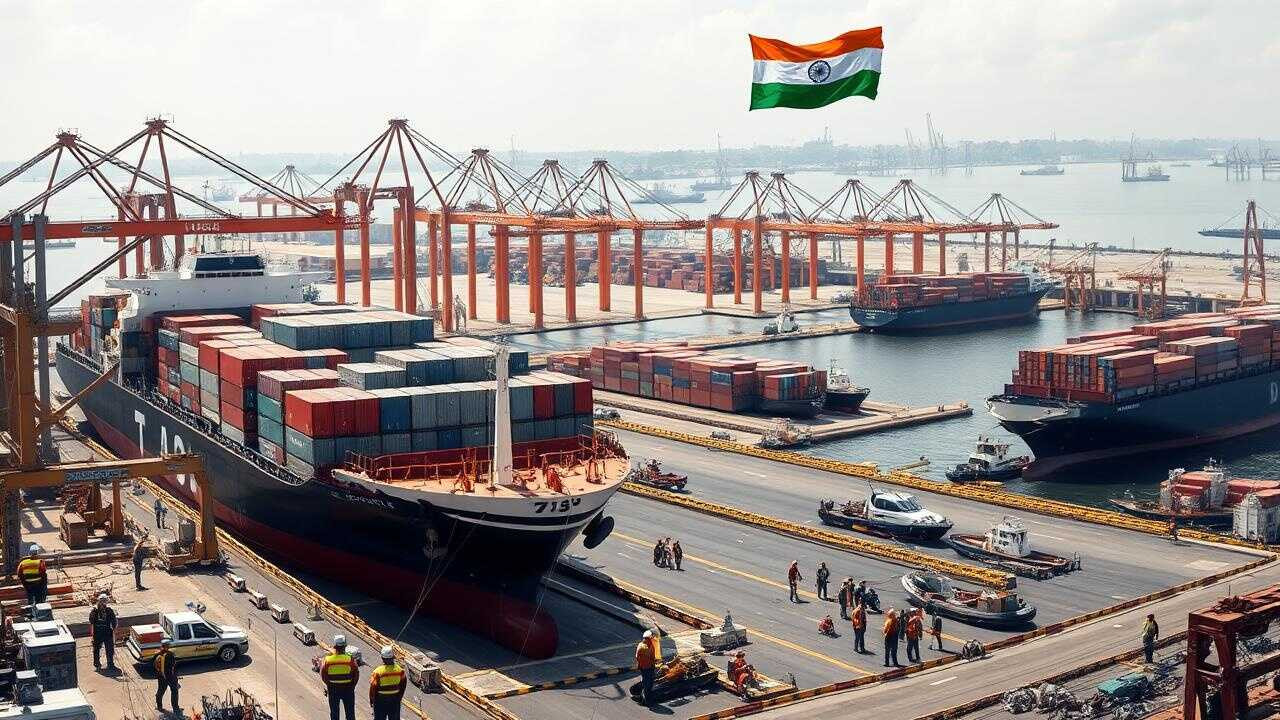To boost maritime growth, the government is expanding the Maritime Development Fund to Rs 70,000 crore, supporting shipbuilding, port infrastructure, and shipping. The fund will use a blended finance model, combining government and commercial capital. India aims to become a top shipbuilding nation by 2047, requiring significant investment and infrastructure development.
India’s Ambitious Plan to Conquer the High Seas: A Shipbuilding Revolution
India’s maritime sector is about to get a serious shot in the arm. Forget incremental changes; we’re talking about a full-blown expansion aimed at transforming the nation into a global shipbuilding powerhouse. The government is reportedly poised to significantly increase the Maritime Development Fund (MDF) to a whopping ₹70,000 crore. This isn’t just shuffling money around; it’s a bold declaration of intent.
For years, India has lagged behind in shipbuilding compared to nations like China, South Korea, and Japan. Our coastline stretches for thousands of kilometers, and our strategic importance in the Indian Ocean is undeniable. Yet, our shipbuilding industry hasn’t quite matched that potential. But those days might be numbered.
This expanded MDF signals a dramatic shift in approach. Where previously the maritime industry might have felt like it was navigating choppy waters, now there’s a substantial financial tide to lift all boats – quite literally. The investment will fuel crucial infrastructure projects, cutting-edge technology adoption, and skilled workforce development.
Why this Maritime Development Fund Matters
The implications of a stronger shipbuilding industry are far-reaching. Beyond the obvious economic benefits, a robust domestic shipbuilding capability enhances India’s strategic autonomy and security. Imagine a scenario where India is less reliant on foreign shipyards for defense vessels, commercial carriers, and specialized maritime equipment. That’s the future this investment aims to create.
But it’s not just about defense. A thriving shipbuilding sector creates a cascade of positive economic effects. Think about the thousands of jobs created, from welders and engineers to designers and project managers. Think about the ripple effect through the supply chain, boosting demand for steel, electronics, and other components.
The increased MDF also opens doors for innovation and technological advancement. India can become a hub for green shipbuilding practices, developing and implementing sustainable technologies for cleaner and more efficient vessels. This not only positions India as a leader in environmentally responsible maritime practices but also creates new export opportunities in the growing market for green ships.
What’s on the Horizon for India’s Shipbuilding?
The government’s vision extends beyond simply building more ships. It’s about creating a comprehensive maritime ecosystem that fosters innovation, competitiveness, and sustainability. This includes:
* Modernizing Shipyards: Upgrading existing facilities with the latest technologies and equipment to enhance efficiency and productivity.
* Developing a Skilled Workforce: Investing in training programs to equip Indian workers with the skills needed to excel in the shipbuilding industry.
* Promoting Research and Development: Encouraging innovation in ship design, materials, and propulsion systems.
* Attracting Foreign Investment: Creating a favorable investment climate to attract global players to the Indian maritime sector.
* Boosting Coastal Shipping: Developing infrastructure to promote coastal shipping as a cost-effective and environmentally friendly mode of transportation.
The government wants India to secure a top spot in global shipbuilding, and is working to develop policies that encourage private sector involvement and make the sector more competitive. This includes streamlining regulations, simplifying licensing procedures, and offering incentives to companies that invest in shipbuilding.

One crucial aspect to observe is the fund allocation strategy. Will it prioritize specific types of vessels, like container ships or specialized defense craft? Will it focus on certain regions or shipyards? The answers to these questions will reveal the government’s strategic priorities and the specific areas where it sees the greatest potential for growth. This initiative also ties into the broader ‘Make in India’ initiative, boosting domestic manufacturing and reducing reliance on imports. You might also be interested in reading about recent reforms in India’s port sector here.
The journey to becoming a global shipbuilding leader won’t be without its challenges. India needs to overcome infrastructure bottlenecks, streamline regulatory processes, and address skill gaps in the workforce. But with the right policies and investments, India can unlock its maritime potential and become a major player in the global shipbuilding industry.
The increased Maritime Development Fund represents a significant commitment to transforming India’s maritime sector. By investing in infrastructure, technology, and skills, the government hopes to propel India to the forefront of global shipbuilding and unlock a wave of economic and strategic benefits. This is more than just building ships; it’s building a stronger, more prosperous India.







